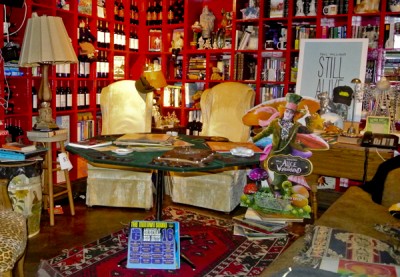
This post was written by Hatchet reporter Shazreh Kahn.
You don’t have to venture down a rabbit hole to find Wonderland – just walk to Dupont Circle.
From the outside, the sprawling Mansion on O Street is unassuming, but its interior offers 100 rooms and 34 bathrooms of vibrant, bizarre antiques, secret passageways and hidden doors.
“There are so many things to captivate your attention, but overall it comes together in a very harmonious blend of positive energy that’s fun to get into the rhythm of,” Natasha Sanchez, who works at the Mansion, said.
Owner and founder H.H. Leonards bought the building in 1980 hoping to restore it to its original structure. By 1985, she had transformed it into a five-story annex that functioned as a store, hotel, museum and a concert venue.
Leonards explained she had no money or business plan when she acquired the Mansion, but envisioned a safe haven for artistic life.
“[The Mansion] doesn’t fit into D.C. at all. Unfortunately [D.C.] is driven by money and not the creative spirit, so this place stands out,” Leonards said. “It is a place of refuge for many people living in D.C. who are from another city. It is a place where people can replenish their spirit and creativity.”
The mansion’s oddities include everything from the prop gun from “Pirates of the Caribbean” and bejeweled guitars to exquisite paintings and fine china.
Some rooms have specific themes, like a log cabin space with western-themed books, and a John Lennon-themed suite that features a framed letter he wrote and a bathroom with his face emblazoned on the carpet.
“It is an oasis in the heart of D.C.,” employee Eric Fulton said. “What I really like about this place are the people who come through here. There are families, artists and musicians who come to stay here and they keep coming back.”
The Mansion is intertwined with the history of D.C: It was designed in 1892 by the same Edward Clark who was the architect for the U.S. Capitol. In the 1930s, it was converted into rooming houses for FBI special agents and in the 1960s it provided a home for student leaders of war protest movements.
Open to the public – a self-guided tour costs $8 – the gallery hosts an annual yard sale each September, which funds the artist in residence programs that provides free housing at the Mansion for artists.
The venue also has programs for children, hosts corporate retreats and has hosted GW students for staff retreats and sorority events.
“Washington is such a diverse city that there are things from everybody’s childhood [here],” Leonards said.


